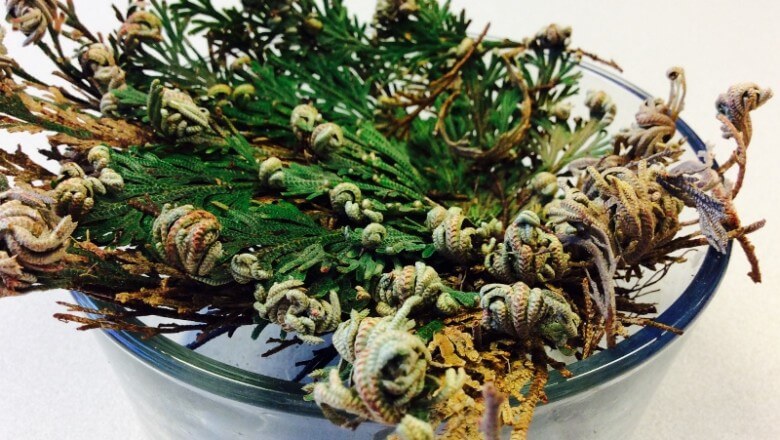The deserts of the Southwestern United States are some of the hottest and driest areas in the country. In these harsh conditions, diverse flora and fauna flourish, many with unique adaptations to their surroundings. One of these organisms is Selaginella lepidophylla, also known as the resurrection plant, which has evolved the ability to survive extreme drought and dehydration. Even after years of no water, the resurrection plant maintains viability and seems to “spring back to life” upon rehydration, a phenomenon that gave the plant its nickname.
The tasty secret behind the desiccation tolerance of the resurrection plant is trehalose, a disaccharide. The plant synthesizes trehalose when it detects low amounts of water, resulting in up to 12.5% trehalose in the plant by dry weight (Adams and others 1990). A recent study in Current Biology explored the importance of trehalose and chaperon proteins in preventing desiccation damage in baker’s yeast, Saccharomyces cerevisiae (Tapia and Koshland 2014). The study concluded that synthesized trehalose protects the organism during long-term desiccation. For survival under short-term desiccation, the study pointed to the importance of trehalose in cooperation with the protein chaperon, Hsp104. Trehalose works by stabilizing sensitive biomolecules, such as proteins, that would be irreversibly damaged under dehydration.
In food and beverage, TREHA® trehalose is a unique ingredient with benefits for freshness, flavor and texture across a wide variety of applications. Visit our product page and watch our TREHA® video to learn more about trehalose’s benefits in food and beverage.
Hungry for more information? Follow us on LinkedIn or Twitter or subscribe to our blog below!
References
Tapia, H. & Koshland, D. (2014 December) Trehalose is a versatile and long-lived chaperone for desiccation tolerance. Current Biology, (24) 2758-2766.
Adams, R.P., Kendall, E., & Kartha, K.K. (1990). Comparison of free sugars in growing and desiccated plants of Selaginella lepidophylla. Biochemical Systematics and Ecology, (18) 107–110.
